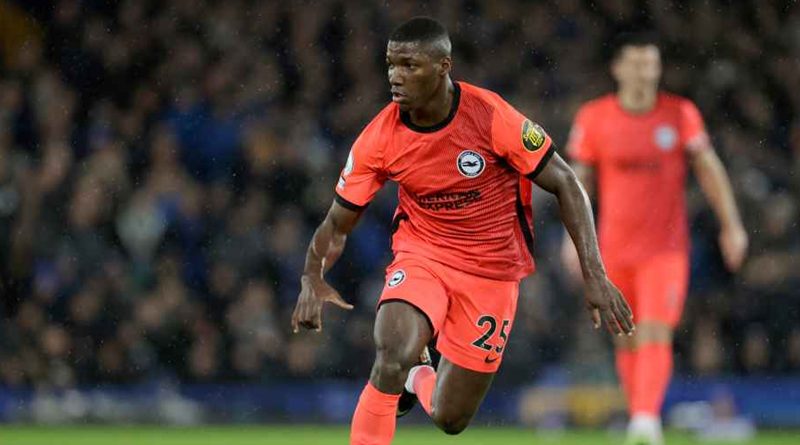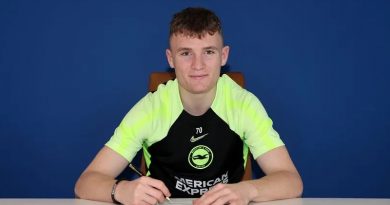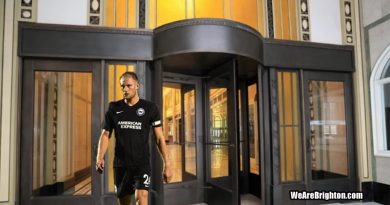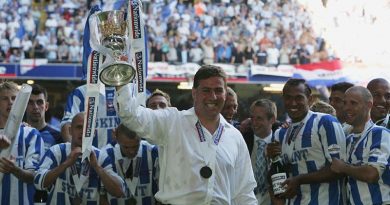Comparing Brighton and Southampton in the transfer market
When the sale of Moises Caicedo from Brighton to Chelsea was eventually completed, some of the most common comments from Blues fans trolling WAB articles about the transfer was to compare the Albion to Southampton.
“Brighton are the new Southampton… You can only do this for so long. Eventually it catches up with a club.”
“It’s good whilst it lasts. Saints had a similar model of self-sustainment. It will not always succeed and if the club concerned doesn’t have worldwide appeal (Man Utd, Liverpool, Real Madrid etc) then a couple of failures will likely spell relegation in short time.”
“Once upon a time in Southampton Sadio Mane scored the fastest hat trick… you will be relegated this year.”
Southampton used to sign good young players with potential, turn them into stars and then sell them on for a profit. The Saints saw their 11 season stay in the Premier League come to an end in May with relegation to the Championship.
Whilst we now hope Chelsea fans will leave WAB alone until at least the next transfer window when they try and sign another Brighton player, the worry for Albion fans will be is there any truth in their comments?
The Southampton Model
“Time flies when you’re having fun” could be an apt phrase for Brighton fans currently. Top of the Premier League and playing superb, attacking football.
And though Albion fans should enjoy every moment whilst they can, it is instructive to remember just how much time passed between Southampton selling their best players and their relegation.
The Saints completed the bulk of their sales to Liverpool (players like Mane, Virgil van Dijk, Nathaniel Clyne, Adam Lallana and Rickie Lambert) between 2014 and 2017.
Their “buy ’em cheap, sell ’em expensive” model was in place six to nine years ago. And in the 2019-20 season, two years after they abandoned said model, they finished 11th in the Premier League.
Since that campaign, the only players Southampton have sold for more than £10 million are Danny Ings, Jannik Vestegard and Pierre-Emile Hojberg.
With Vestergard and Hojberg, the Saints actually made a loss. The duo were bought for a combined £35 million and sold for £28 million.
In the four seasons since that 11th placed finish, the only sale which fits the narrative is Ings. It is an almighty stretch to say the sale of Mane in 2016 had any part in the relegation of Southampton in 2023.
Between 2018 and 2023, the Saints had a net spend of over £200 million. That places them in mid table in the Premier League net spend table and shows they have long since moved away from the model now in use by Brighton and which supporters of other clubs lazily compare the Albion with.
| 2022-23 | 2021-22 | 2020-21 | 2019-20 | 2018-19 | Total | |
| Southampton Net Spend | -£138m | +£17m | -£11m | -£34m | -£36m | -£202 |
Instead, there are three man reasons for the downfall of Southampton in 2022-23. Realistically, their relegation had nothing to do with sales made between 2014-17.
The Saints had two very poor transfer windows last season. They spent £138 million on 13 players, of whom only Romeo Lavia and Carlos Alcaraz could be labelled successful.
Sekou Mara, Armel Bella-Kotchap, Joe Aribo, Gavin Bazunu, Samuel Edozie, Juan Larios, Duje Caleta-Car, Mislav Orsic, James Bree, Kamaldeen Sulemana, Mateusz Liz, Paul Onuachu… none of them had the desired impact.
Not only were Southampton making bad signings, but there were too many of them. Just like Chelsea, the Saints ended up with an unmanageable squad of 35 senior professionals.
The biggest issue for the Saints in 2022-23 could be found in the goalkeeping department. Bazunu and Alex McCarthy had an FBref.com combined expected goals figure of -22, meaning they conceded 22 more goals than were expected from the quality of chances the opposition created. Included in those errors were a couple of expensive howlers in both games against Brighton.
Southampton also made some poor decisions when it came to managers, rattling through three different bosses. Ralph Hasenhuttl made way for Nathan Jones who was sacked and replaced by Ruben Selles.
Sorry Chelsea fans, but there is little evidence that these three issues which led to Southampton being relegated are likely to affect Brighton anytime soon.
The Albion’s approach to new players remains measured. Based on what we have seen so far, Joao Pedro, James Milner, Mahmoud Dahoud and Simon Adingra all look certain to hit the mark.
There is no reason to believe the same will not apply to Igor Julio and Bart Verbruggen. Verbruggen strengthens a squad already containing Jason Steele and two of the most highly rated young goalkeepers in English football, Carl Rushworth and James Beadle.
And the last mistake the Albion made with a managerial appointment (ignoring the brief cameo Jens Scheuer had with the women’s team last season) was Sami Hyypia in 2014.
Rather therefore than relying on the lazy “You will do a Southampton” mantra, there are two issues Chelsea fans hoping for a Brighton relegation can hold onto.
The first is how the Seagulls cope with their added workload from the Europa League. As for the second, well it is the continued departure of first choice players for significant profit.
What the table below shows is that Brighton have continuity planning superior to any other Premier League club. Each of the nine first team players who have left the Albion in the last three seasons is listed next to their most direct replacement.
Depending on how much money is spent on replacing Caicedo, Brighton have made a profit of £300 million across the nine departures.
The table offers little comfort for Chelsea fans anticipating a downturn caused by player sales. Every departure – with the exception of Ben White – has been followed by Brighton signing or promoting from their academy and improved replacement.
Before this summer and the arrivals of Mahmoud Dahoud and Joao Pedro, most of those replacements have already been at the club. The exception is Pervis Estupinan coming in when Marc Cucurella left.
Assessing the change from Cucurella to Estupinan is complicated. It is hard to see anyone arguing now that Estupinan is not an improvement on Cucurella.
However, the difference between the two is less stark based on the form Cucurella showed in a Brighton shirt. Chelsea managing to turn Cucurella from Albion Player of the Season into a Sunday morning park footballer makes the difference appear massive.
It is still too early to confirm how replacing Robert Sanchez with Verbruggen and Alexis Mac Allister with Pedro will work out. The potential of the two new players and the impact Pedro has made in his limited game time so far gives reason for optimism that progression will again be seamless.
| Player | Sold | Replacement | Profit | Impact |
| Moises Caicedo | 2023-24 | Mahmoud Dahoud + New Player TBC | £115m - New Player | TBC |
| Robert Sanchez | 2023-24 | Bart Verbruggen | £8m (£25m - £17m) | TBC, likely + |
| Alexis Mac Allister | 2023-24 | Joao Pedro | £5m (£35m - £30m) | TBC, likely level |
| Leandro Trossard | 2022-23 | Kaoru Mitoma | £22m (£25m - £3m) | + |
| Neal Maupay | 2022-23 | Evan Ferguson | £15m (£15m - £0m) | + |
| Marc Cucurella | 2022-23 | Pervis Estupinan | £47m (£63m - £15m) | + |
| Dan Burn | 2021-22 | Marc Cucurella + Existing Defenders | -£2m (£13m - £15m) | + |
| Yves Bissouma | 2021-22 | Moises Caicedo | £20m (£25m - £5m) | + |
| Ben White | 2020-21 | Existing Defenders | £50m | Level |
The big concern to be resolved is therefore the departure of Caicedo. Brighton beating both Luton Town and Wolves 4-1 is clearly a positive start to life without the most expensive player in British football history.
But as per the Sky Sports analysis of the Luton games, Dahoud does not have the same defensive nous as Caicedo. A negative impact is perhaps inevitable when losing a £115 million footballer; albeit that the club and Roberto De Zerbi will have a plan to minimise.
“Caicedo ranked among the best midfielders in the Premier League last season for recoveries, tackles and interceptions last season,” says the Sky Sports analysis.
“His importance to Brighton without the ball in stemming potential counters against them was a key reason in why Roberto De Zerbi’s relentless football flourished as teams couldn’t break out from their defensive shape.”
“It’s why Chelsea are willing to pay £115m for his services – the job he does is critical for sustaining attacks. Although it’s a small sample size of 90 minutes, that task did look easier for Luton without Caicedo patrolling the midfield.”
“Luton managed 36 entries into Brighton’s final third and 22 touches in their box. That is a huge spike in terms of the numbers usually associated with relegation threatened teams playing away at Brighton.”
“For instance, Southampton managed just five final third entries and just five touches in the Brighton box during the 3-1 defeat in May.”
“With a little bit more care and quality, Luton could have taken advantage of such promising positions and the narrative of what looked a routine win for Brighton on paper would have been very different”.
Further sales after Caicedo are inevitable. Whilst not wanting to wish away the current generation, a potential programme of equivalent sales over the next three to four years is shown below.
| Player | Potential Sale | Replacement |
| Kaoru Mitoma | 2024-25 | Simon Adingra |
| Pervis Estupinan | 2024-25 | New Signing |
| Julio Enciso | 2025-26 | Facundo Buonanotte |
| Bart Verbruggen | 2025-26 | Carl Rushworth |
| Neal Maupay | 2022-23 | Evan Ferguson |
| Evan Ferguson | 2026-27 | Abdallah Sima |
| Jan Paul van Hecke | 2026-27 | Ed Turns |
| Simon Adingra | 2027-28 | Adrian Mazilu |
| Faundo Buonanotte | 2027-28 | Andrew Moran |
Brighton already look to have replacements lined up in some cases. No doubt they will continue to invest in the next few transfer windows and hope existing academy players develop to cover others.
As Kaoru Mitoma replaced Leandro Trossard, so too Simon Adingra might replace Mitoma. The best of Jeremy Sarmientio, Facundo Buonanotte, Abdallah Sima, Cam Peupion, Andrew Moran and Adrian Mazilu then provide future wingers and number 10s.
And so the Brighton transfer model keeps rolling. It is this succession planning which means the Albion can avoid becoming the next Southampton, despite the hopes and dreams of Chelsea supporters.
Peter Finn




